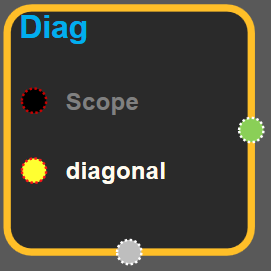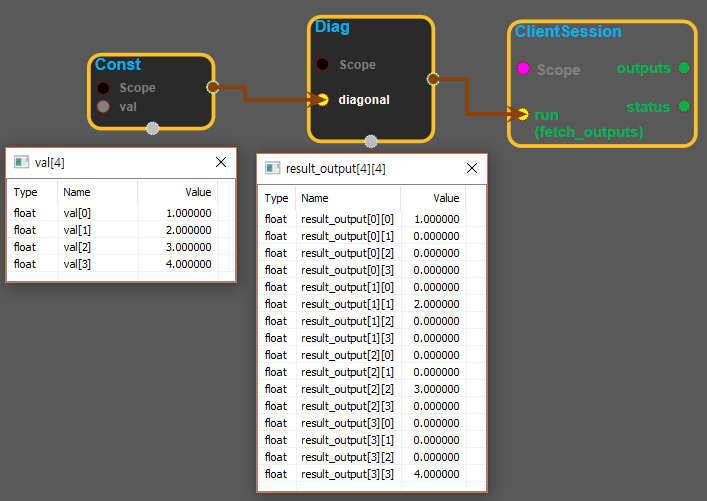Diag
tensorflow C++ API
Returns a diagonal tensor with a given diagonal values.
Summary
Given adiagonal, this operation returns a tensor with thediagonaland everything else padded with zeros. The diagonal is computed as follows:
Assumediagonalhas dimensions [D1,..., Dk], then the output is a tensor of rank 2k with dimensions [D1,..., Dk, D1,..., Dk] where:
output[i1,..., ik, i1,..., ik] = diagonal[i1, ..., ik]and 0 everywhere else.
For example:
``` 'diagonal' is [1, 2, 3, 4]
tf.diag(diagonal) ==> [[1, 0, 0, 0] [0, 2, 0, 0] [0, 0, 3, 0] [0, 0, 0, 4]] ```
Arguments:
Returns:
Output: The output tensor.
Diag block
Source link :https://github.com/EXPNUNI/enuSpaceTensorflow/blob/master/enuSpaceTensorflow/tf_array_ops.cpp

Argument:
- Scope scope : A Scope object (A scope is generated automatically each page. A scope is not connected.)
- Input diagonal : A Tensor. Must be one of the following types: float32, float64, int32, int64, complex64, complex128. Rank k tensor where k is at most 3.
Return:
- Output output : Output object of Diag class object.
Result:
- std::vector(Tensor) result_output : Assume
diagonalhas dimensions [D1,..., Dk], then the output is a tensor of rank 2k with dimensions [D1,..., Dk, D1,..., Dk] where:output[i1,..., ik, i1,..., ik] = diagonal[i1, ..., ik]and 0 everywhere else.
Using Method
※ Rank를 늘려주는 역할을 한다.
